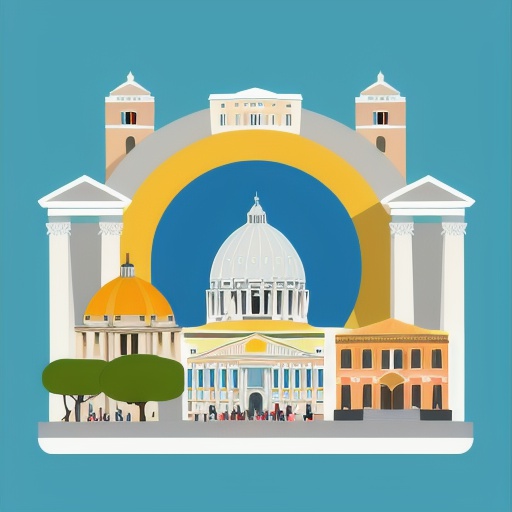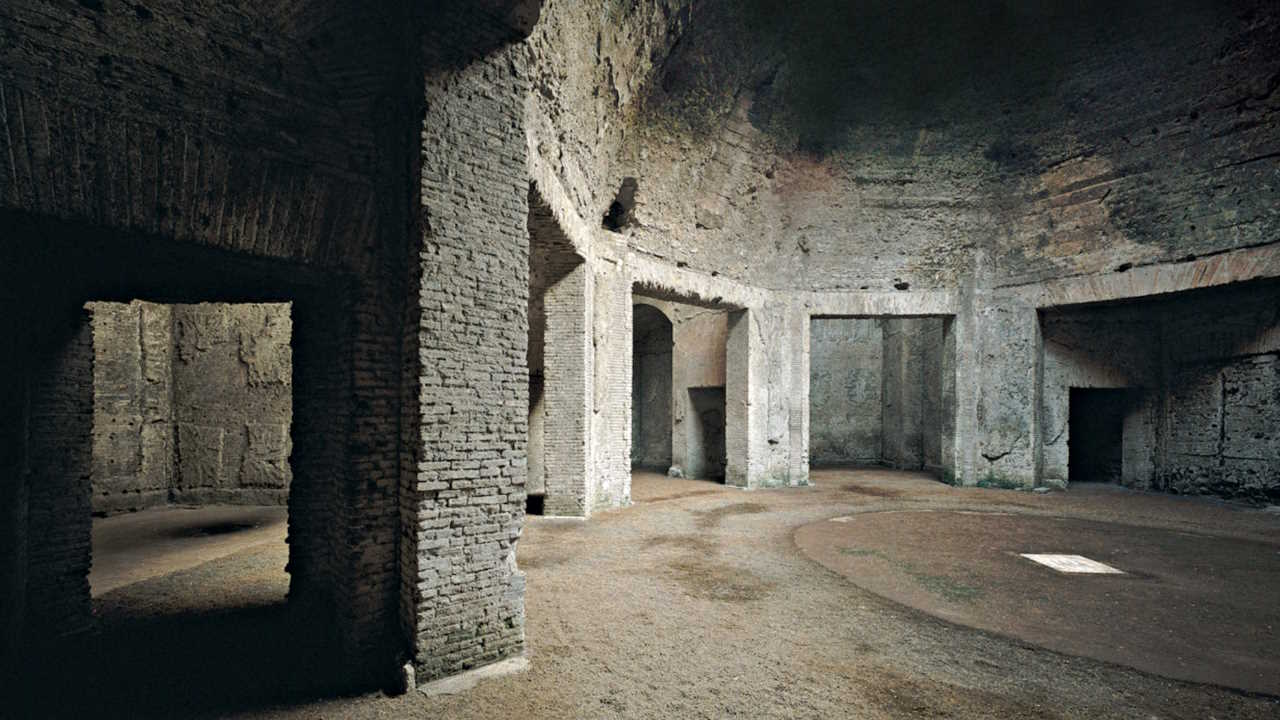
The fabulous Domus Aurea in Rome covered a vast area of about 80 hectares and included gardens, palaces, and recreational rooms decorated with extraordinary murals.
After the death of Nero, the Domus Aurea underwent several transformations and damages caused by fire and collapses. Over the centuries, its grand structure was buried and lost under new constructions until the 15th century when it was rediscovered by chance during excavation work. In recent decades, thanks to technological advances in conservation and the work of expert archaeologists, it has been possible to protect and preserve the Domus Aurea. Modern restoration techniques have helped save the precious murals and frescoes that still adorn the walls, returning to the public the opportunity to admire its beauty and historical importance.
Today, visiting the Domus Aurea is an experience that allows immersion in the art and architecture of ancient Rome. Visitors can explore the different rooms and environments, admiring the magnificent paintings that depict mythological stories and scenes of daily life at that time through a carefully studied path.
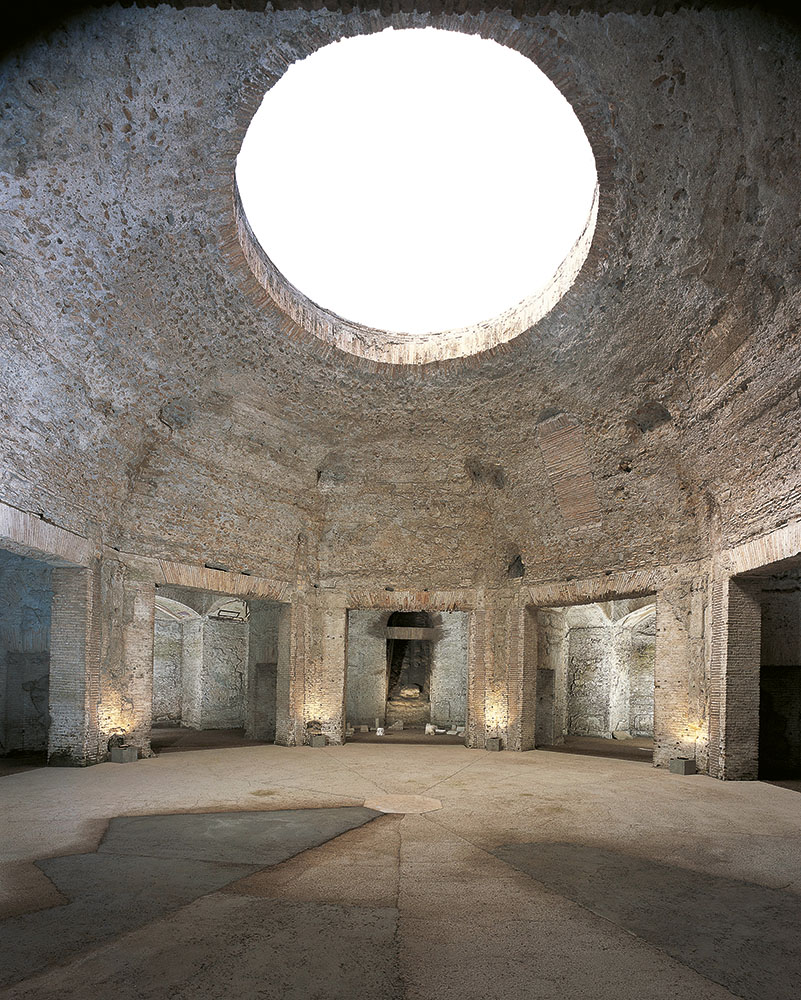
The historical context in which the Domus Aurea was constructed was marked by dramatic events and political controversies. Nero ascended to the throne at the age of just 16 after the death of Emperor Claudius. During the first years of his reign, the young ruler dedicated himself to ambitious projects, often aimed at satisfying his ego and desire for grandeur. The Domus Aurea was a striking example.
The construction of this palace complex required significant financial resources and considerable effort from architects and workers. The palace extended over a vast area, including large gardens, fountains, and even an artificial lake. The grandiosity and opulence of the Domus Aurea made it a symbol of unrestrained luxury and excess associated with Nero’s reign.
However, the construction of the Domus Aurea was accompanied by criticism and controversy. To realize this grandiose project, numerous inhabited quarters of the city were demolished, and the population rebelled against the emperor for the destruction of their homes. His unpopular fiscal policy and poor handling of political and economic issues led to opposition and plots against him.
In 68 AD, the Roman Empire was engulfed in a revolt of provincial governors, and Nero was forced to flee from Rome. Later, he committed suicide, putting an end to the Julio-Claudian dynasty. After Nero’s death, his successors sought to erase the memory of the deceased emperor: the Domus Aurea was damaged and partly buried, and some parts of the complex were converted into public baths or civil constructions.
Despite its brief existence and the tragic end of its creator, the Domus Aurea had a significant impact on Roman architecture.
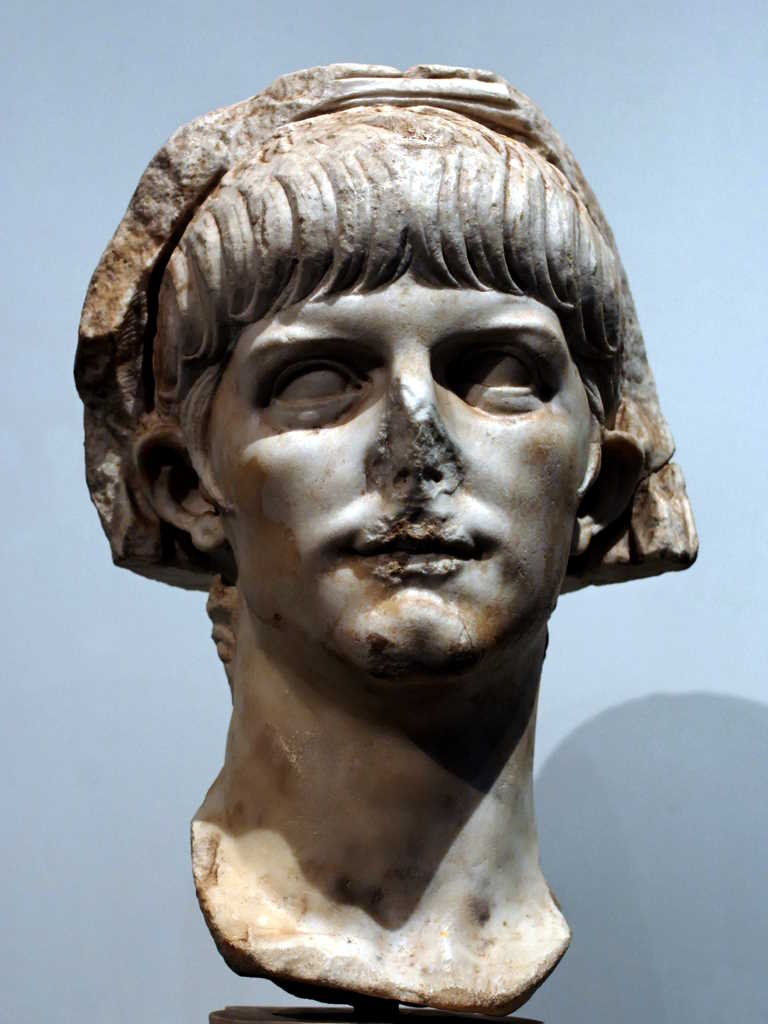
The main architect of Domus Aurea was Severo Celere, who worked tirelessly to create an unprecedented structure, marking the beginning of a new phase in Roman architecture.
Domus Aurea was built occupying a significant part of the Palatine Hill. The residence was surrounded by lush gardens, artificial lakes and panoramic terraces. One of its distinctive architectural elements was the presence of large rooms with dome-shaped ceilings, which represented a novelty for the time. These domes, made of concrete and covered with a thin sheet of lead, contributed to a greater diffusion of light inside the rooms.
The complex presented a wide range of architectural and decorative elements, demonstrating the skill and creativity of the architects of the time. The ceilings of the rooms were embellished with intricate frescoes, the walls were covered with precious marbles and decorative panels, while mosaic floors added further opulence to the whole. The interior spaces were distributed to offer unique perspectives, creating a sense of surprise and wonder for the guests.
Main elements that composed the Domus Aurea complex:
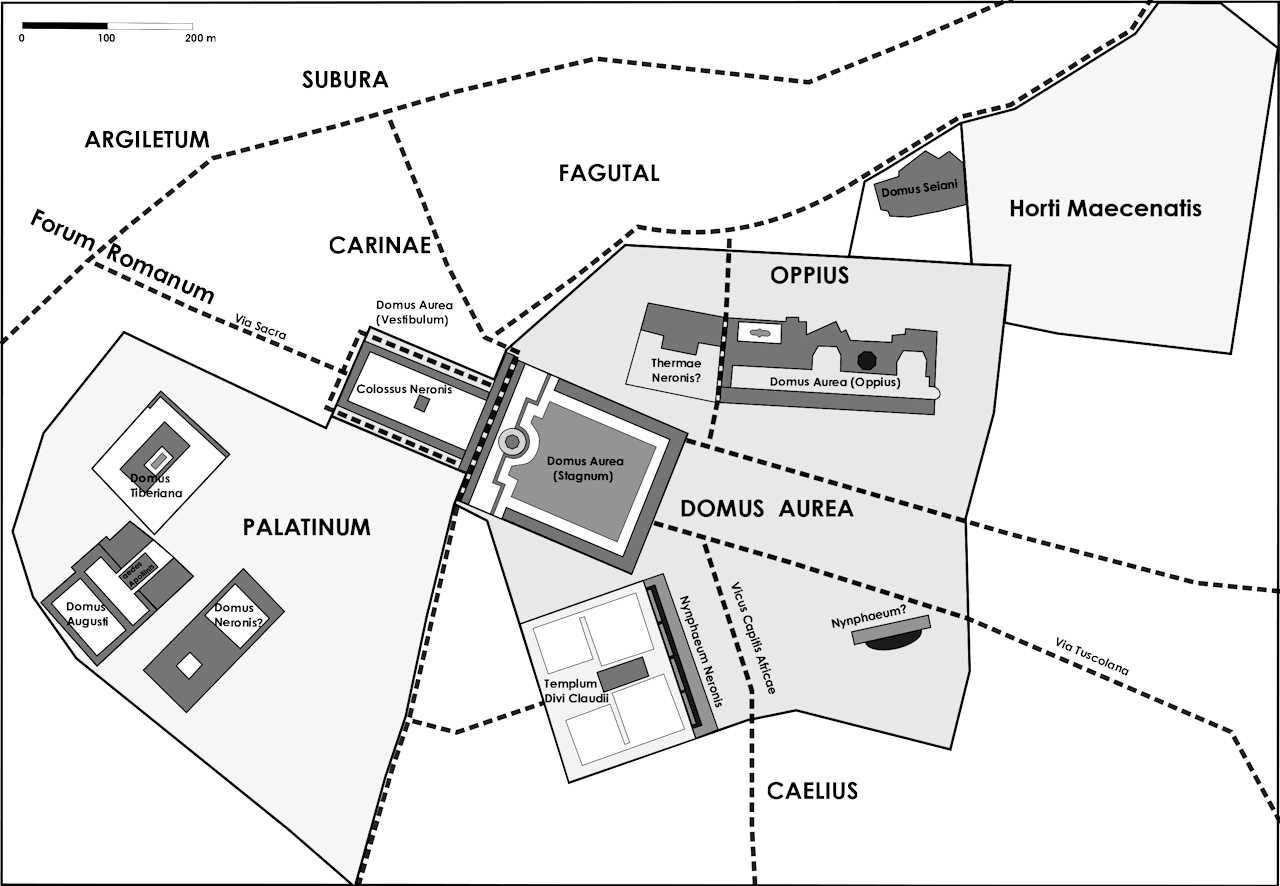
The artistic decoration of the Domus Aurea’s rooms represents an extraordinary example of ancient Roman art and architecture. The ornamental motifs, frescoes, mosaics, and sculptures reflect the magnificence of the empire and Emperor Nero. The iconographic themes and artistic influences of the time provide us with a valuable insight into Roman culture and society during the period. These works of art, with their symbolic meanings, continue to invite us to reflect on the greatness and complexity of ancient Roman history.
The decoration of the Domus Aurea’s rooms was exceptional, characterized by ornamental motifs of rare beauty. The main decorative elements included friezes with floral, geometric, and stylized animal motifs, all executed with extreme care and precision. The floral motifs evoked nature and fertility, while the geometric motifs indicated mathematical order and symmetry. The stylized animals, often depicted in fantastic contexts, symbolized power and authority.
The walls of the rooms were covered with mythological scenes, historical episodes, and representations of hunting events. Images of gods and goddesses, heroes, and mythical creatures were painted with vibrant colors and accurate details. These works of art told epic stories and celebrated the grandeur of the Roman Empire and the divinity of Emperor Nero. The frescoes also had a political function, as they depicted the emperor’s power as the protector of the people and the city.
Created with precious tesserae, often in gold and colored stones, the mosaics added a luxurious splendor to the environment. The subjects of the mosaics ranged from lush nature to exotic animals, as well as scenes of daily life and military triumphs. These mosaics reflected the aesthetic taste of the time and paid tribute to the opulence of the emperor and the Roman Empire.
The sculptures inside the Domus Aurea were scattered throughout the residence and contributed to emphasizing the grandeur of the rooms. Marble statues and figurines depicted deities, mythological heroes, and portraits of prominent figures of the time. The sculptures were placed both inside ornamental niches and as autonomous elements in open spaces. These works of art aimed to inspire a sense of veneration towards the emperor’s power and to praise his magnificence.
The Domus Aurea reflected a wide range of iconographic themes, influenced by Greco-Roman mythology, Etruscan traditions, and Hellenistic art. The figure of Nero was often assimilated to that of mythological deities such as Apollo or Dionysus, to emphasize his status as a deified ruler. Some frescoes and mosaics depicted scenes of religious syncretism, in which Roman deities were associated with Greek deities.
The artworks present in the Domus Aurea had deep symbolic meanings. In addition to celebrating the power and opulence of the emperor, these masterpieces also communicated a message of stability and prosperity of the Roman Empire. The presence of deities and mythological creatures suggested a connection between the emperor and the realm of the gods, emphasizing the legitimacy of his rule. At the same time, the depiction of hunting events and military triumphs indicated the strength and control of the Roman army.
The grotesques of the Domus Aurea were created using a combination of artistic techniques, including the incrustation style and the fifth style. The incrustation style involved the application of a mixture of lime, sand, and pozzolana, followed by a layer of plaster on which the grotesques motifs were painted. In contrast, the fifth style involved the direct painting on the fresh plaster layer, allowing the painter to achieve greater expressive freedom. These techniques allowed artists to create complex details and nuances of color, making the grotesques of the Domus Aurea a superb example of artistic skill and mastery.
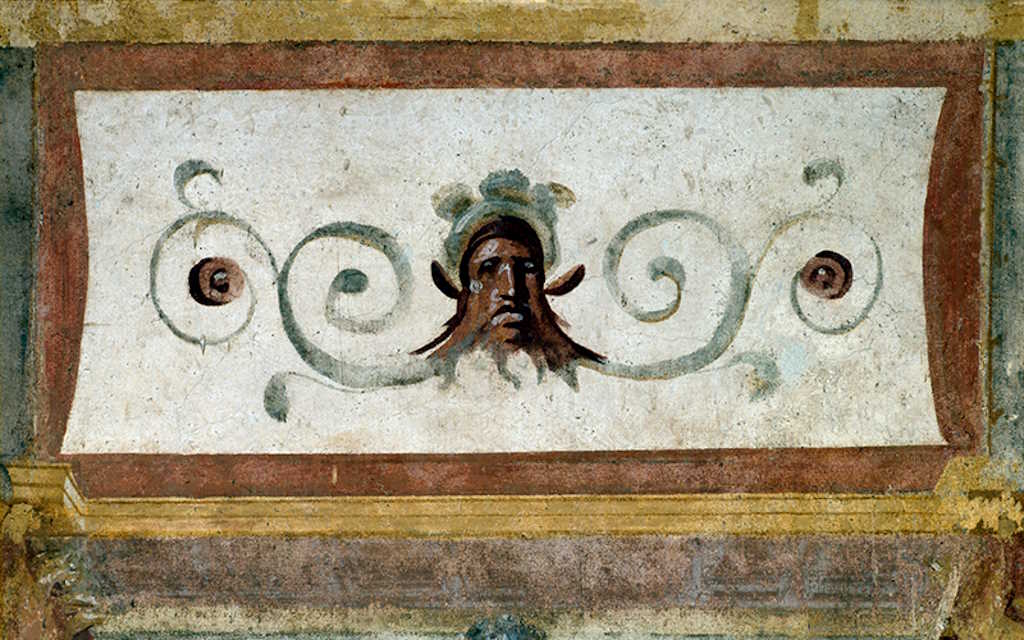
The Domus Aurea was characterized by magnificent spaces and luxurious decorations. Its interiors were made up of vast halls, enchanting gardens, and a rich variety of rooms, each designed for specific purposes. Among the various rooms present, the baths, dining rooms, entertainment spaces, and private chambers were integral parts of the residence’s function.
One of the most significant parts of the Domus Aurea was the baths, where residents could dedicate themselves to moments of relaxation and body care. The baths offered not only the opportunity to take a bath but also to enjoy massages and other treatments for physical well-being. This environment was designed to promote the pleasure and indulgence of its residents, offering a break from the rigors of daily life.
The dining rooms were another important element of the Domus Aurea. Ancient Romans considered lunch a moment of great social importance, during which they met with friends, relatives, and guests. The dining rooms were often decorated with splendid frescoes and sculptures, and the diners could enjoy delicious food and refined drinks. In this way, the emperor Nero demonstrated his generosity and magnificence through the hospitality offered in his residence.
The Domus Aurea also housed spaces for entertainment and culture. Concert halls, theaters, and areas for artistic performances were available to entertain guests and residents of the residence. Culture and art were fundamental aspects of Roman life, and Nero sought to consolidate his image as a sovereign lover of the arts through the promotion of cultural events in his residence.
Private chambers constituted another crucial aspect of the residence. The Domus Aurea was composed of numerous rooms intended for different functions, such as bedrooms, studies, and spaces for reflection. These rooms were designed to offer comfort and privacy to the residents, and each was decorated with taste and refinement. Daily life in the Domus Aurea was characterized by a high quality of life and the well-being of its inhabitants.
Additionally, the residence was surrounded by splendid gardens, fountains, and outdoor spaces. These gardens were a distinctive element of Roman architecture and represented an oasis of tranquility in a chaotic city. They allowed residents to enjoy nature and spend pleasant moments outdoors, such as walks or moments of relaxation.
Nero’s Domus Aurea represented an extraordinary demonstration of power and wealth. The spaces within this sumptuous residence were studied to satisfy the diverse needs and desires of the residents, offering spaces for relaxation, entertainment, and culture. Daily life inside the Domus Aurea was characterized by luxury, opulence, and refinement, and the complex demonstrated the great talent of the architects and artists of ancient Rome. Despite the unfortunate fate of the Domus Aurea after Nero’s death, it left an indelible imprint on the history of architecture and daily life in Rome.
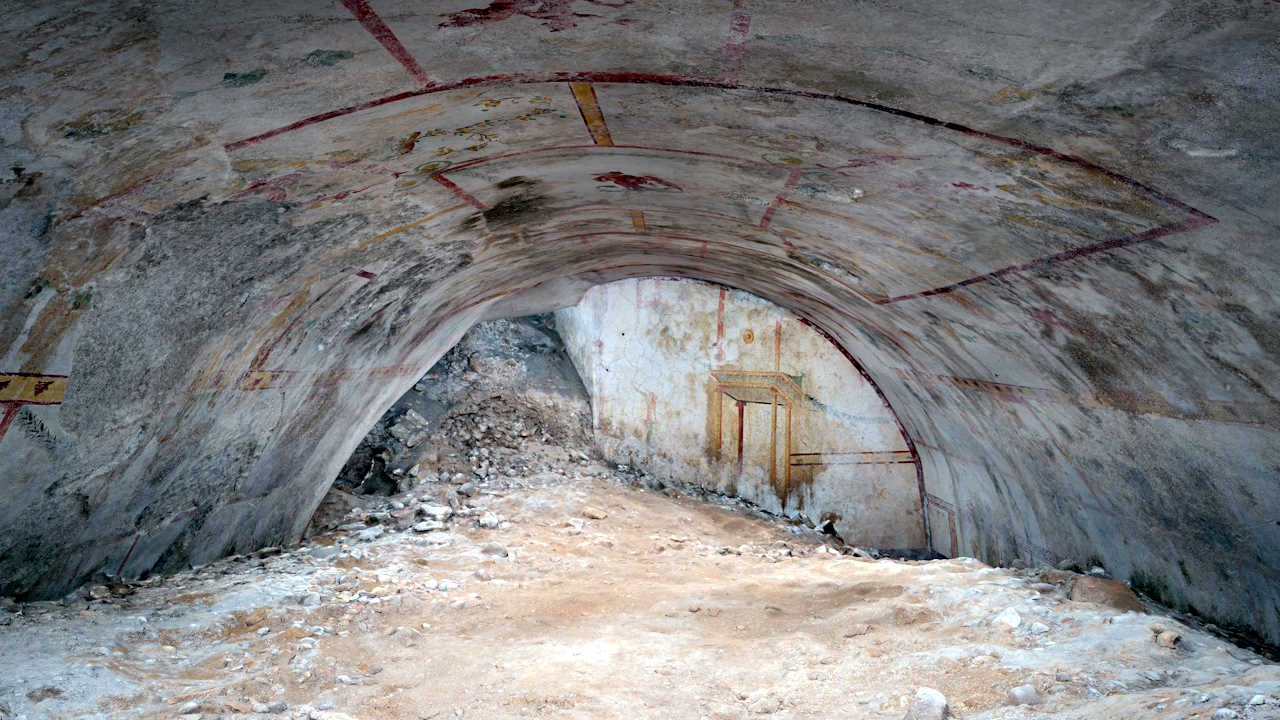
During excavations carried out in 2018, archaeologists discovered a mysterious room, rich in frescoes, that had remained in darkness for twenty centuries. Sphinxes, centaurs, and the god Pan decorate the walls surrounded by flowers, fruits, birds, garlands, tree branches, stylized underwater creatures, flower and bird festoons. The hall is still largely buried, and the removal of ancient debris is not foreseen for stability reasons.
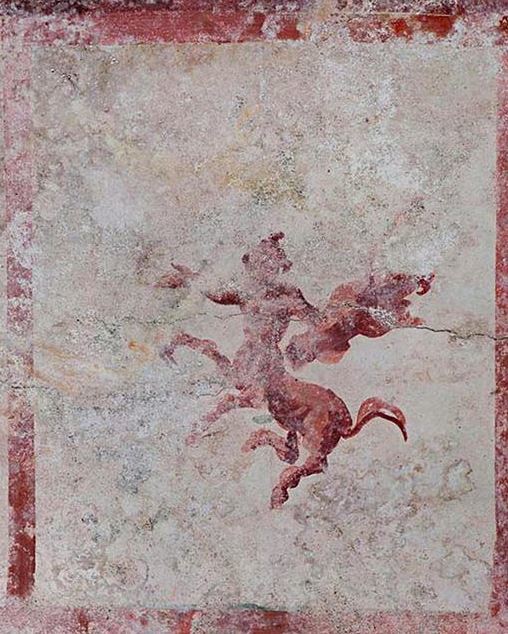
After Nero’s death, the Domus Aurea fell into decline. The subsequent emperor, Vespasian, initiated the construction of the Colosseum right above a portion of the original structure, reducing and concealing it under the new amphitheater. This act of construction was the first step towards the burial of Nero’s magnificent dwelling.
For many centuries, the Domus Aurea was forgotten and buried under layers of earth and debris. It was only during the Renaissance, in the 15th century, that its existence was rediscovered. In 1480, while digging in a vineyard, a young antiquities hunter, Felice de Fredi, made a fortuitous discovery: he stumbled upon a hole in the ground that led him to a vast cave with walls covered in extraordinary paintings. This lucky find turned out to be the ceiling of one of the underground rooms of the Domus Aurea.
The news of this incredible discovery spread quickly among intellectuals and artists of the time. One of the most important Renaissance painters, Raphael Sanzio, along with other artists such as Michelangelo and Pinturicchio, was among the first to explore the Domus Aurea and admire its extraordinary works of art. The mural decorations of the Domus Aurea deeply impressed Renaissance artists, who were fascinated by the vividness of the colors, the masterful use of perspectives and the sophisticated painting technique.
The discoveries in the Domus Aurea greatly influenced Renaissance and subsequent art, giving rise to a new artistic style known as “grotesque.” This style incorporated decorative elements inspired by the mural paintings found in the Domus Aurea, such as volute motifs, fantastic animals and stylized human figures, and became very popular in Renaissance and Baroque art. Moreover, the use of perspective and vivid colors in the paintings of the Domus Aurea stimulated the evolution of Western art, opening new avenues for artistic expression.
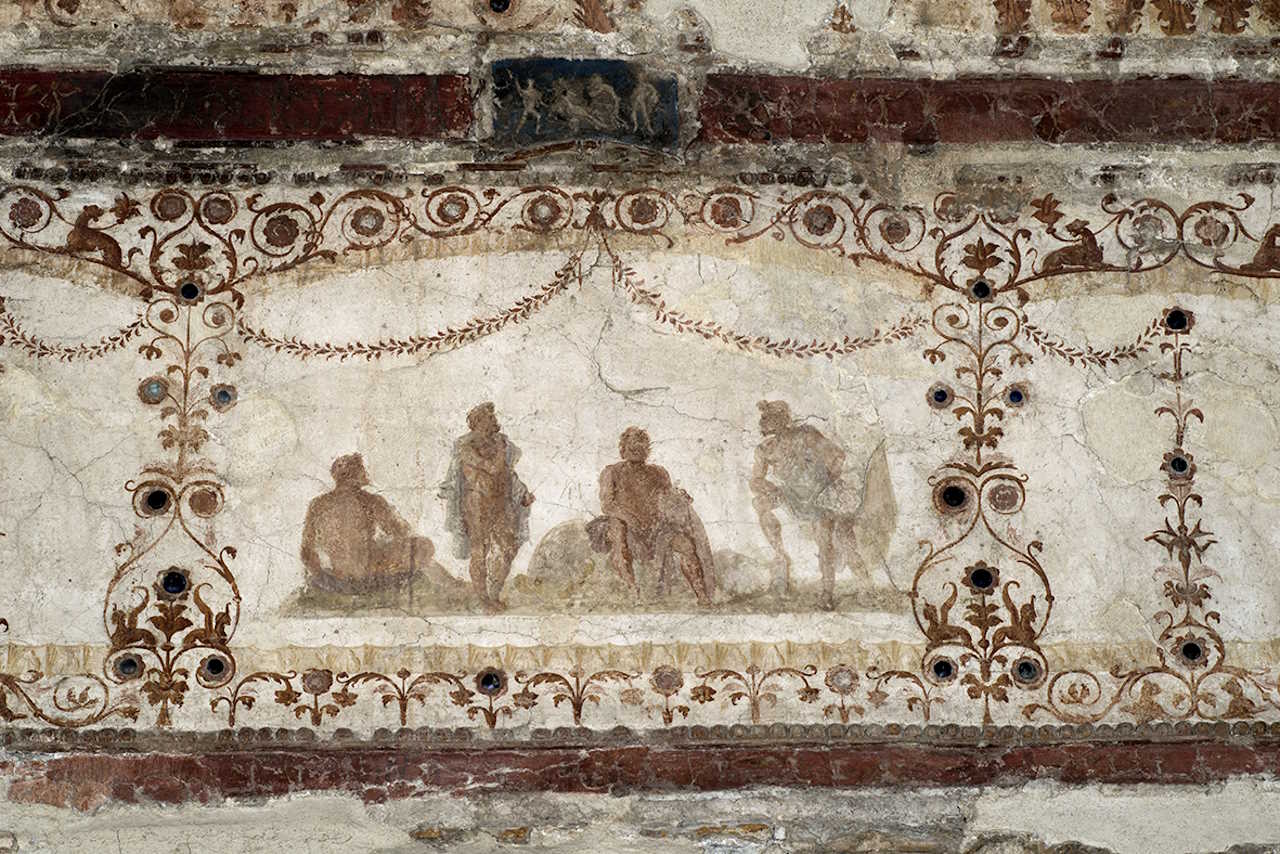
I was watching with curiosity the young Michelangelo as he lowered himself with a rope from the hole in the ceiling of the Domus Aurea, so eager to study ancient art that he was willing to risk his life to do so.
“Hello, Michelangelo,” I said, “what brings you to visit the Domus Aurea?”
“I’m looking for inspiration for my paintings,” Michelangelo replied, “and there is no better place to find inspiration than here, in the house of Emperor Nero.”
I nodded approvingly. “Yes, that’s true. But you have to be careful. This place is dangerous.”
Michelangelo didn’t seem worried. “I know, but I can’t resist the temptation to see the grotesques. They’re so fascinating.”
I smiled. “Yes, the grotesques are truly impressive. But do you know how they were made?”
Michelangelo shook his head.
“The ancient Roman artists used a technique called stucco. They applied a layer of fresh plaster on the walls and then painted over it. When the plaster dried, they scraped away some parts to create a three-dimensional effect.”
Michelangelo seemed fascinated. “I knew there was a secret behind these works of art. Thank you, Jupiter.”
He slowly lowered himself from the hole in the ceiling, being careful not to get hurt.
excerpt from “A Story of Rome narrated by Jupiter“
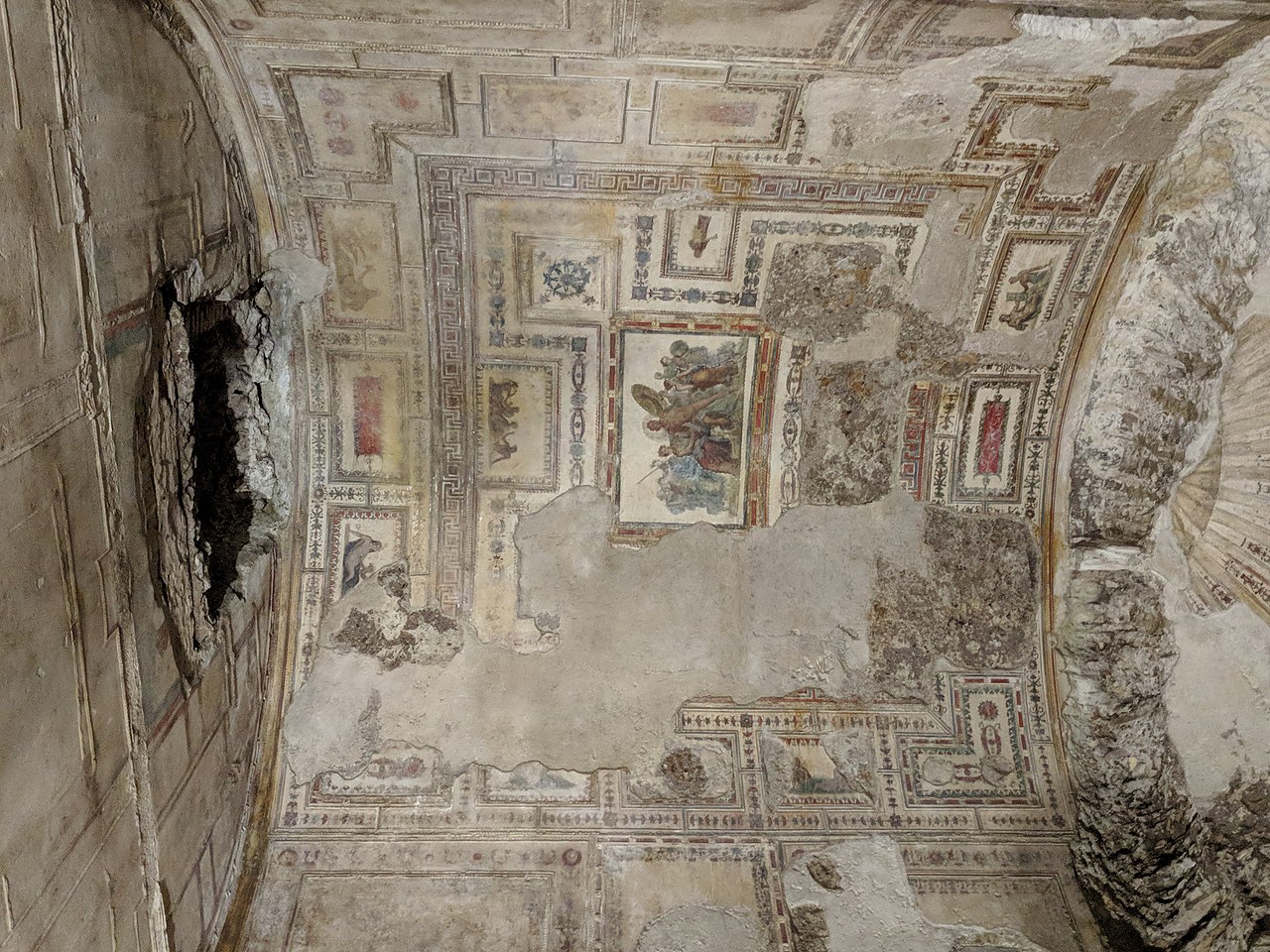
Despite the discovery of the Domus Aurea contributing to the growth of art and archaeology, continued exploration has put the building at risk of irreparable damage. Humidity and mold formation have compromised the stability of the structures, and measures have been taken to conserve and restore the building to ensure its survival.
The Domus Aurea is now an important archaeological site open to visitors, and thanks to technological progress in preservation, it has been possible to preserve and protect this incredible heritage of ancient Rome, allowing future generations to admire and study this extraordinary example of grandeur and artistic beauty.
However, the discovery of the Domus Aurea also presented a challenge for archaeologists and rulers of the time. Discoveries of Nero’s complex were often brought to public attention, leading to debates about the conservation and restoration of such sites. Due to the size and extent of the Domus Aurea, much of the area was buried again to preserve it from atmospheric agents and the effects of time.
Today, the Domus Aurea is one of Rome’s most important archaeological sites and has been reopened to the public on several occasions. Despite its decline centuries ago, its impact on culture and art remains evident and continues to fascinate and inspire visitors from around the world.
staff Argiletumtour 2023
